Abstract ceramics is a captivating artistic medium that embraces creative freedom, prioritizing form, texture, and color over conventional pottery shapes. Unlike traditional ceramics, which often focus on utility, abstract ceramics invite artists to explore unique designs and unconventional aesthetics. This art form has gained popularity for its ability to elevate personal expression and bring modern, artistic elements into home decor.
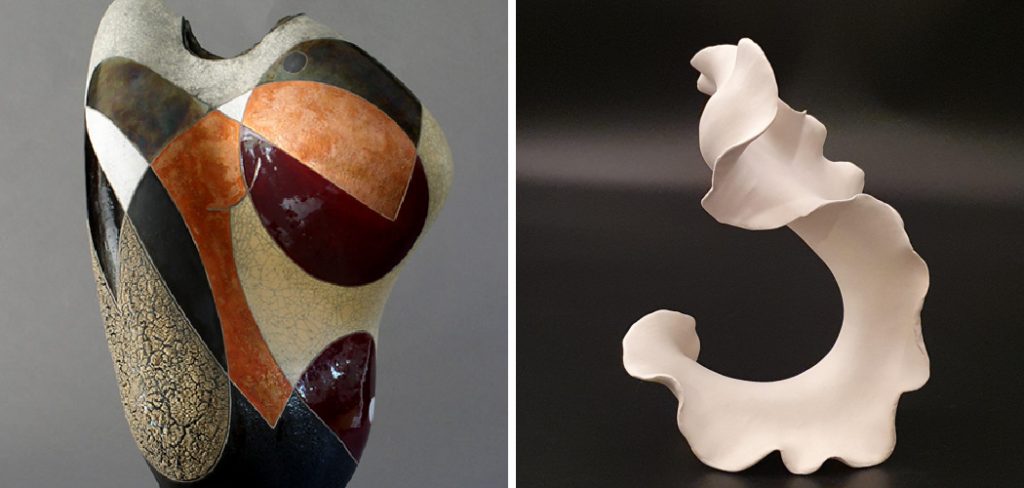
Creating abstract ceramics allows individuals to develop their pottery and crafting skills and offers a therapeutic and fulfilling way to channel creativity. Whether you are a seasoned artist or a complete beginner, learning how to make abstract ceramics can open up endless possibilities, enabling you to craft truly distinctive pieces. This article aims to guide you through the process step-by-step, highlighting essential materials, techniques, and tips to help you bring your creative visions to life.
Materials and Tools Needed
Creating abstract ceramics requires essential materials and tools to shape, decorate, and finish your pieces. Below is a list of items you’ll need to get started:
Essential Materials
- Clay: Select from stoneware, earthenware, or porcelain based on your style preference. Each type offers distinct properties that influence texture, durability, and finish.
- Glazes and Underglazes: Use these to add vibrant colors, textures, and finishes to your creations. Experimenting with different glazes can drastically change the final look of your piece.
- Slip (optional): This liquid form of clay can be applied to create unique textures or used as a base layer for other finishing touches.
Tools
- Pottery Wheel (optional): While not mandatory, a wheel can be beneficial for shaping symmetrical pieces.
- Carving Tools: These are Essential for creating patterns, details, or abstract designs in the clay.
- Brushes and Sponges: These are Used for smoothing, detailing, and applying glazes precisely.
- Kiln: A kiln is indispensable for firing the clay, hardening your pieces, and achieving the desired finish.
Optional Decorative Elements
- Colored Slips, Stamps, or Texture Tools: Add depth and intricate patterns to your abstract works.
- Gold Leaf or Metallic Paint: This is Perfect for highlights and accents, giving your ceramics a sophisticated, eye-catching touch.
With these materials and tools, you will be well-equipped to begin crafting unique and expressive abstract ceramics.
Choosing the Right Clay for Abstract Ceramics
Selecting the right clay is essential for creating successful abstract ceramic pieces. The type of clay you choose will impact not only the final appearance of your work but also the techniques you can use and the piece’s durability. Here are three popular clay types to consider:
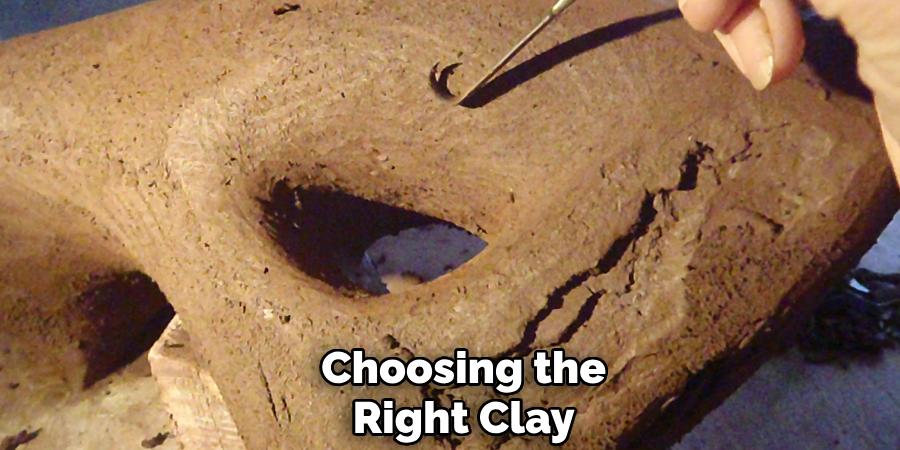
- Stoneware: Known for its durability and versatility, stoneware is ideal for a broad range of techniques. It is suitable for both beginners and advanced ceramists, making it a popular choice. Stoneware provides excellent strength after firing, ensuring your pieces are long-lasting.
- Porcelain: With its smooth and fine texture, porcelain is perfect for creating delicate and highly detailed pieces. Its refined surface enhances intricate designs and provides a polished, professional finish. However, working with porcelain can require more experience, as it is less forgiving during shaping.
- Earthenware: Softer and more porous, earthenware is often favored for its rustic and earthy appeal. It is particularly well-suited for bold designs and textured surfaces. This type of clay is typically fired at lower temperatures, offering a different aesthetic than stoneware or porcelain.
Considerations for Clay Type
When selecting clay, keep in mind the firing temperature to ensure compatibility with your chosen glaze. Additionally, evaluate the clay’s texture based on whether you want a smooth or more textured finish to complement your abstract designs.
How to Make Abstract Ceramics: Basic Techniques
Hand-Building Techniques
- Coiling: This method involves rolling out long, even clay coils and layering them to build the form. Coiling is ideal for creating organic, flowing shapes emphasizing curves and natural movement. It suits abstract designs that rely on irregular or asymmetrical forms.
- Slab Building: With slab building, you’ll roll out flat sheets of clay and cut them into desired shapes before assembling them. This technique works well for constructing more angular or structured forms, contrasting beautifully with abstract patterns or textures added during the finishing stages.
- Pinch Pots: Pinch pots are formed by starting with a simple ball of clay and using your thumbs and fingers to pinch it into the desired shape. This technique is perfect for small, delicate sculptures or abstract forms with a handmade, tactile quality.
Wheel Throwing
Using a pottery wheel enables the creation of more symmetrical, cylindrical shapes as a starting point. For abstract ceramics, experimentation is key—push, pull, or distort the clay as it spins to achieve irregular and unconventional forms. The wheel allows for dynamic interaction with the clay and the opportunity to shift its shape organically.

Combining Techniques
Achieving more intricate abstract designs often involves combining hand-building with wheel-throwing techniques. For example, you might construct a base on the wheel and add hand-built elements for texture or asymmetry. Blending techniques expands creative possibilities and adds depth and contrast to the final piece.
Adding Texture and Detail to Your Abstract Ceramic Piece
Carving and Incising
Carving tools offer an excellent way to add patterns and depth to your ceramic piece. By incising designs directly onto the surface of the clay, you can create intricate details that emphasize texture and make your work visually compelling. Experimenting with varying depths and shapes of incisions allows you to play with light and shadow, which can enhance the abstract nature of your design.
Slip Decorating
Slip decoration opens up a world of color and surface variation for your ceramics. By applying colored slips before bisque firing, you can achieve bold contrasts and layered textures. Use brushes to paint organic, free-flowing abstract designs, or layer different slip colors for a dynamic effect. Don’t hesitate to experiment with splattering, dripping, or blending slips to create unique patterns that reflect your personal artistic style.
Using Stamps or Textured Tools
To further enhance your ceramic surface, consider incorporating texture by pressing stamps, textured rollers, or found objects into the clay. Depending on your chosen materials, these tools can produce repetitive geometric patterns or irregular organic textures. Everyday objects, such as lace or leaves, can also add surprising and intricate patterns to your piece.
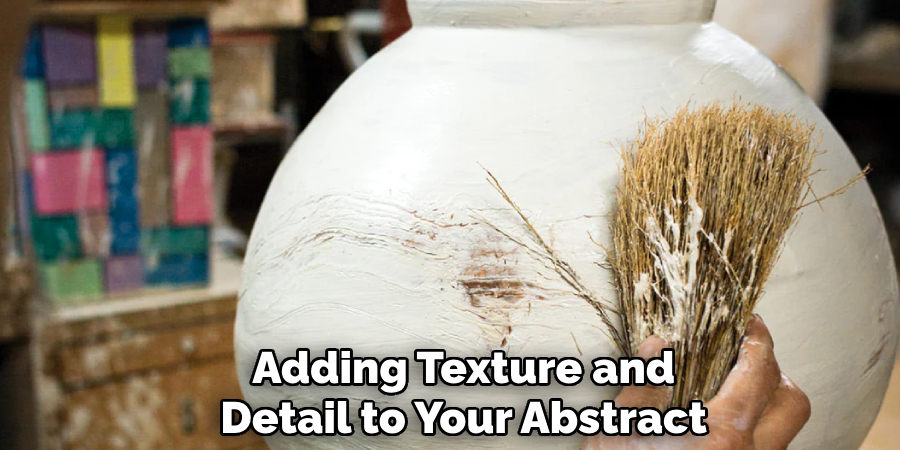
Sgraffito Technique
For a distinctive abstract look, experiment with the sgraffito technique. First, apply a layer of slip to the clay. Once the slip has dried slightly, carve into it to reveal the clay body beneath. This dual-layer effect offers a stunning visual contrast and allows for meticulous, detailed patterns that elevate your ceramic work.
Glazing and Color Application
Choosing the Right Glaze for Abstract Ceramics
Selecting the perfect glaze is crucial in achieving a harmonious abstract design on your ceramic pieces. Consider whether you want a glossy or matte finish to complement your artistic vision. Glossy glazes provide a shiny, reflective surface that enhances vibrancy and texture, while matte glazes offer a more understated, velvety look. Depending on your desired aesthetic, both finishes can be utilized effectively in abstract techniques.
Layering Glazes
For added complexity, try layering multiple glazes to create depth and dimension. Experiment with different color combinations and thicknesses, allowing overlapping tones and textures to come to life. The interplay between vibrant and muted colors can result in dynamic, abstract visuals that draw the eye to subtle intricacies.
Abstract Glazing Techniques
- Drip Glaze: Allow the glaze to drip freely over the surface of your piece for a spontaneous, fluid effect. This technique adds a sense of motion and unpredictability to your work.
- Dipping and Pouring: Dunk portions of your ceramics into glaze or pour chosen colors over specific areas to achieve organic and flowing designs.
- Sponging: Apply glaze using a sponge to create a soft, textured, and mottled finish, adding layers of abstraction.
Experimenting with Underpainting and Color Blocking
Bold color blocks are an integral part of abstract ceramic art. Use underglazes to create striking large-scale patterns. Experiment with contrasting or complementary color schemes to make your designs visually impactful. Combining techniques like underpainting with glaze accents can further enhance your abstract compositions for a standout effect.
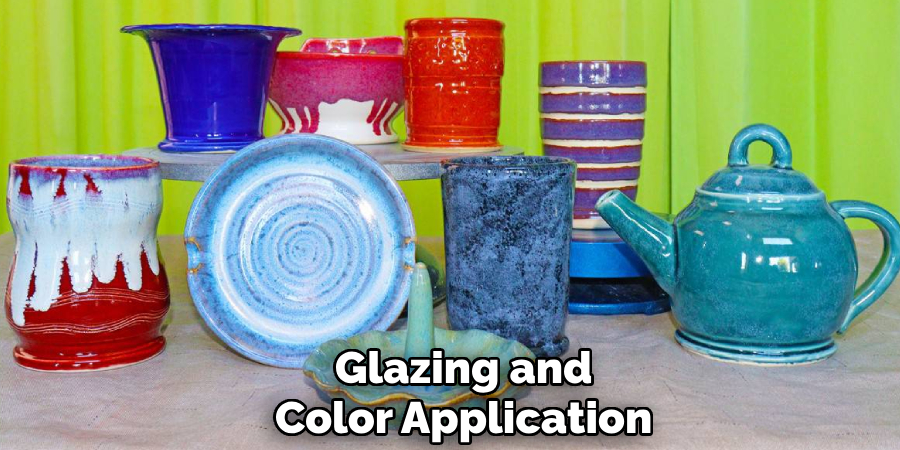
Firing Your Abstract Ceramic Pieces
Firing is crucial in making your abstract ceramic artwork permanent and visually striking. It involves multiple stages to ensure the piece is appropriately hardened and the glazes achieve their intended effect.
Bisque Firing
The first stage is bisque firing, where the clay piece is fired to remove all moisture and harden it into a durable form. This step is vital for preparing the surface for glazing. Ensure you set the kiln to the correct temperature recommended for your specific clay type, as overheating or underfiring can compromise the piece’s structure.
Glaze Firing
After applying glazes, the ceramic piece must undergo a second, higher-temperature firing. This step matures the glaze and solidifies your abstract design. Always follow the glaze manufacturer’s recommended temperature settings to achieve optimal texture, color vibrancy, and durability.
Kiln Types and Firing Techniques
Choosing a kiln can affect the final outcome of your abstract ceramics. Electric kilns offer consistent temperature control, perfect for detailed glaze work, while gas kilns provide opportunities for unique effects like reduction firing. Abstract ceramic art often involves experimenting with firing techniques and temperatures to create unexpected textures and finishes. Keep records of your firing parameters to refine your process over time.
Troubleshooting Common Issues in Abstract Ceramics
Cracking During Firing
Cracking can occur if pieces aren’t dried thoroughly before firing or if temperature changes in the kiln are too rapid. To prevent this, ensure your work is evenly dried by leaving it to air dry for an adequate amount of time. Use a slow bisque-firing schedule to minimize thermal shock.
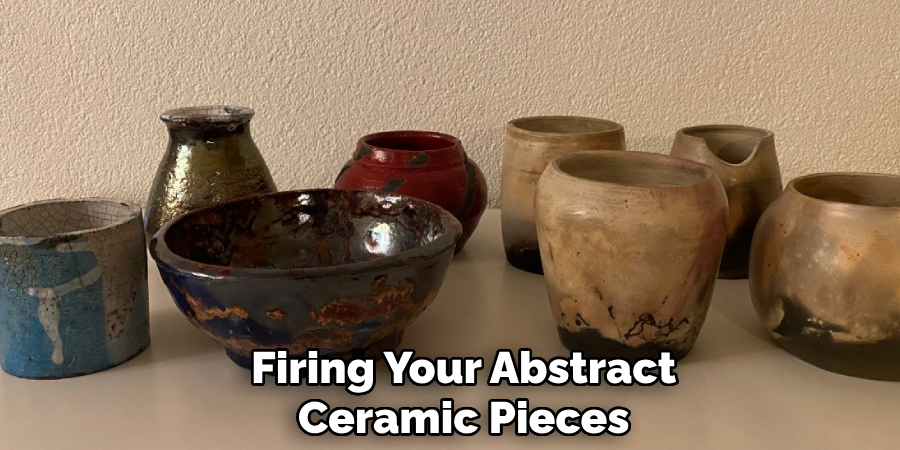
Uneven Glazing
Uneven glazing often results in glaze drips or uneven finishes. To counter this, clean the ceramic surface before applying the glaze and experiment with different application methods, such as brushing, spraying, or dipping. This will help achieve a consistent and balanced finish.
Warping
Warping issues typically arise from inconsistent clay thickness or asymmetrical designs. Ensure that clay is evenly rolled out and balanced during construction. Additionally, supporting shapes during firing can reduce the chance of warping.
Color Fading
If colors are fading, it may be due to incorrect glaze application or mismatched firing temperatures. Double-check that the glaze is applied as directed, and verify that the kiln’s firing temperature aligns with the glaze specifications for vibrant and lasting results.
Conclusion
The process of how to make abstract ceramics involves selecting the right clay, experimenting with various shaping techniques, applying texture to enhance visual interest, and carefully glazing and firing for a durable finish. Each step offers opportunities to infuse personal creativity and style into your work.
Don’t hesitate to try different materials and methods, as this experimentation often creates unique and personalized abstract pieces. Finally, embrace the freedom and unpredictability of abstract design—allow your imagination to guide you, resulting in unexpected and beautiful results that reflect your artistic vision.
Specialization:
- Master of wheel-throwing, hand-building, and advanced glazing techniques
- Focus on creating both functional pottery and decorative art pieces
Recognition:
- Celebrated by collectors and art enthusiasts for creating one-of-a-kind pieces that blend artistry with functionality
- Participates in local and national exhibitions, earning accolades for his innovative designs and craftsmanship
Passion:
- Deeply committed to exploring and pushing the boundaries of ceramic artistry
- Continuously experiments with new materials, firing techniques, and artistic concepts to evolve his craft
Personal Philosophy:
- Believes in the transformative power of art, aiming to evoke emotions and connections through his ceramic creations
- Advocates for sustainability in ceramics, using eco-friendly materials and practices whenever possible


